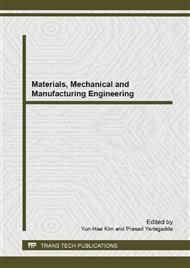p.639
p.643
p.649
p.654
p.658
p.662
p.667
p.672
p.678
A New Method of Expressing Point Model Based on Kd-Tree for Plane Area
Abstract:
According to the space equal features of midpoint segmentation KD-tree, anisotropic quantitative method is proposed. After having used this method, the coordinate figures of sampling points in point model were quantified again; and the quantitative results have been represented as encoding of space partition methods and results in the process of constructing KD-tree. Meantime, the effectiveness that the method was used to express point model have been simulated and studied. It turned out that the quantitative method is very suitable for large flat area, because it is not only directly reduce the amount of point model geometry data, but also greatly reduce sampling points in case of keeping the numerical precision of the model geometry data unchanged, so as to further reduce the amount of point model data.
Info:
Periodical:
Pages:
658-661
Citation:
Online since:
November 2013
Authors:
Keywords:
Price:
Сopyright:
© 2014 Trans Tech Publications Ltd. All Rights Reserved
Share:
Citation:


